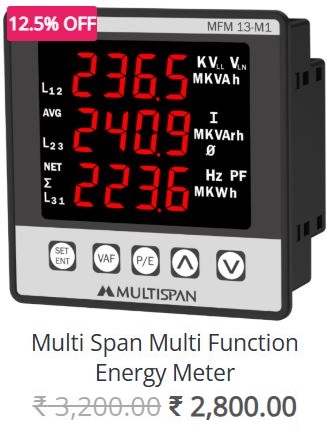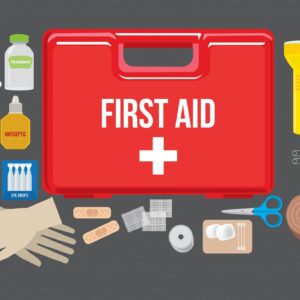Valves are integral components of countless systems across industries such as oil and gas, water treatment, HVAC, and manufacturing. Their role in controlling the flow of liquids, gases, and slurries ensures that processes are safe, efficient, and reliable. In this blog post, we will explore the different types of valves, their functions, and the best practices for maintaining them to ensure smooth operation.
What is a Valve?
A valve is a mechanical device used to control, regulate, or direct the flow of fluids within a system. Valves can control the flow of liquids, gases, vapors, and slurries, as well as regulate pressure and temperature. Their applications are widespread, ranging from simple household plumbing to large-scale industrial applications.
Types of Valves and Their Functions
Valves come in many different shapes, sizes, and designs, each suited to specific applications. Here’s a rundown of the most commonly used valve types and their functions:
1. Gate Valve
- Function: Gate valves are primarily used to start or stop the flow of a fluid. They are designed for fully open or fully closed positions, making them ideal for applications where flow control is not required.
- Common Applications: Gate valves are typically used in pipelines for water, steam, and oil.
2. Globe Valve
- Function: Globe valves are used for regulating the flow of fluid. They have a movable plug or disc that can be adjusted to control the flow rate, making them ideal for applications requiring precise flow control.
- Common Applications: Globe valves are used in systems that require frequent flow adjustments, such as in heating systems or chemical processing.
3. Ball Valve
- Function: Ball valves use a spherical ball with a hole in the middle that rotates to control the flow. They are known for their quick on/off capabilities and tight sealing properties, making them perfect for high-pressure systems.
- Common Applications: Ball valves are commonly used in gas and liquid transport pipelines, water distribution systems, and in industries like food processing.
4. Butterfly Valve
- Function: Butterfly valves use a rotating disc to control the flow of fluid. They are lightweight, compact, and provide quick shut-off for large diameter pipes, often in low-pressure systems.
- Common Applications: Widely used in HVAC systems, water treatment plants, and food and beverage industries.
5. Check Valve
- Function: A check valve allows fluid to flow in only one direction, preventing backflow. This is critical in preventing reverse flow that could damage equipment or disrupt processes.
- Common Applications: Check valves are commonly used in pumps, drainage systems, and wastewater treatment plants.
6. Pressure Relief Valve
- Function: Pressure relief valves are safety devices designed to release excess pressure from a system when it reaches a certain threshold, preventing damage to equipment or the potential for hazardous situations.
- Common Applications: Used in steam boilers, pressurized gas tanks, and chemical reactors.
7. Solenoid Valve
- Function: Solenoid valves use an electromagnetic coil to control the opening and closing of a valve, allowing for automated control of fluid flow in systems that require rapid response.
- Common Applications: Solenoid valves are used in sprinkler systems, automated manufacturing lines, and water treatment.
Common Valve Maintenance Practices
Regular maintenance of valves is crucial for extending their lifespan, reducing downtime, and ensuring operational efficiency. Here are some essential maintenance practices for valves:
1. Inspection
Routine inspection is vital to identify any signs of wear, corrosion, or damage. Check the valve body, bonnet, actuator, and seals for leaks or degradation. Regularly inspect for:
- Leaking seals or packing
- Signs of corrosion or rust
- Excessive vibration or noise
- Reduced valve operation speed or response time
2. Lubrication
Lubrication helps maintain the smooth operation of moving parts, especially in manual valves, where stems or discs may become stiff over time. Use appropriate lubricants and follow the manufacturer’s recommendations for the type and frequency of lubrication.
3. Cleaning
Debris and sediment can clog valve ports, which may impact flow control or cause premature wear. Cleaning the valve and associated piping regularly can prevent blockages. Be sure to remove any particulate matter and inspect filters if applicable.
4. Valve Testing
Periodic testing ensures that valves are functioning correctly. For example, testing a relief valve at regular intervals ensures that it will open at the specified pressure when needed. For control valves, you may need to test the response time and accuracy of flow regulation.
5. Seal and Packing Replacement
Valves have seals and packing materials that wear out over time, leading to leaks. It’s important to replace seals and packing at the recommended intervals or sooner if leaks are detected. Using the correct material for the application is essential to avoid early failure.
6. Actuator Calibration
For automated valves, regular calibration of actuators ensures they are operating within specified parameters. If an actuator is malfunctioning, it could lead to improper valve operation and affect the entire system’s performance.
7. Preventative Maintenance Plan
Develop a comprehensive preventative maintenance (PM) plan that includes the above tasks, along with other checks like monitoring pressure and temperature levels and ensuring proper valve operation under various conditions. Keep detailed records of inspections, replacements, and repairs for ongoing maintenance scheduling.
Conclusion
Valves play a critical role in fluid and gas systems across industries. Understanding the types of valves, their functions, and common maintenance practices can help ensure the longevity, safety, and efficiency of your operations. Regular inspections, lubrication, testing, and prompt repair or replacement of damaged parts can significantly reduce the risk of unexpected downtime and costly repairs. Proper valve maintenance is a key factor in optimizing your system’s performance and avoiding costly failures. By investing in regular valve care, you can maintain smooth operations and extend the lifespan of your system components.














